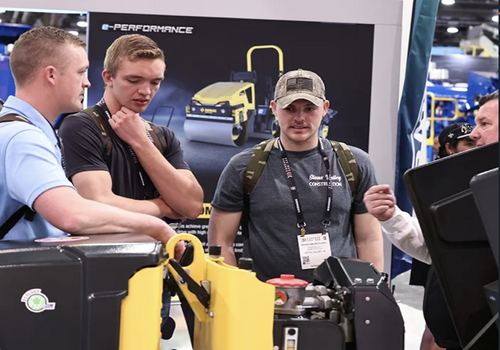Conducting a Job Hazard Analysis (JHA) is crucial for ensuring safety on a construction site. It helps identify potential hazards before they cause accidents, ensuring that everyone goes home safe at the end of the day. Whether you're a construction worker, contractor, or business owner, understanding how to conduct a JHA can make a significant difference in your project's safety and efficiency.
STEP 1: INVOLVE YOUR TEAM
The first step in conducting a JHA is to involve your team. Safety is everyone's responsibility, and getting input from those who are directly involved in the work can provide valuable insights. Gather your crew and explain the purpose of the JHA. Encourage them to share their experiences and observations about potential hazards. This collaborative approach not only helps identify risks but also fosters a culture of safety.
STEP 2: BREAK DOWN THE JOB
Next, break down the job into individual tasks. This step is essential because it allows you to analyze each part of the job separately. For example, if you're working on a roofing project, you might break it down into tasks such as setting up ladders, removing old roofing materials and installing new shingles. By focusing on each task, you can identify specific hazards associated with each one.
STEP 3: IDENTIFY HAZARDS
Once you've broken down the job into tasks, it's time to identify the hazards associated with each task. Look for anything that could potentially cause harm, such as:
- Physical Hazards: These include things like falls, electrical shocks and being struck by objects.
- Chemical Hazards: Exposure to harmful chemicals, such as asbestos or lead, can pose significant risks.
- Biological Hazards: These might include exposure to mold or bacteria.
- Ergonomic Hazards: Repetitive motions or awkward postures can lead to musculoskeletal injuries.
Encourage your team to think about what could go wrong at each step and document all potential hazards.
STEP 4: ASSESS THE RISKS
After identifying the hazards, assess the risks associated with each one. Consider the likelihood of the hazard occurring and the severity of the potential injury. This risk assessment will help you prioritize which hazards need immediate attention and which ones can be addressed later. Use a risk matrix to categorize the hazards based on their likelihood and severity.
STEP 5: DEVELOP CONTROL MEASURES
Now that you've identified and assessed the risks, it's time to develop control measures to mitigate them. Control measures can include:
- Elimination: Removing the hazard entirely, if possible.
- Substitution: Use a safer material or process to replace the hazardous one.
- Engineering Controls: Implementing physical changes to the work environment, such as installing guardrails or ventilation systems.
- Administrative Controls: Changing work procedures or schedules to reduce exposure to hazards.
- Personal Protective Equipment (PPE): Providing workers with appropriate PPE, such as hard hats, gloves and safety glasses.
Make sure to involve your team in developing these control measures, as they can provide practical solutions based on their experience.
STEP 6: IMPLEMENT AND MONITOR
Once you've developed your control measures, it's time to implement them. Ensure that all workers are trained on the new procedures and understand how to use any new equipment or PPE. Regularly monitor the worksite to ensure that the control measures are being followed and are effective. Conduct periodic reviews of the JHA to identify any new hazards that may arise and update the analysis as needed.
STEP 7: REVIEW AND REVISE
A JHA is not a one-time task; it's an ongoing process. Regularly review and revise your JHA to ensure it remains relevant and effective. Encourage your team to report any new hazards or near-misses, and use this information to update your analysis. Continuous improvement is key to maintaining a safe work environment.
Conducting a Job Hazard Analysis on a construction site is essential for preventing accidents and ensuring the safety of everyone involved. By involving your team, breaking down the job into tasks, identifying hazards, assessing risks, developing control measures and continuously monitoring and revising your JHA, you can create a safer and more efficient work environment. Remember, safety is a team effort, and everyone's input is valuable in creating a hazard-free workplace. Stay safe out there!
Photo credit: RAFAEL BEN ARI/BIGSTOCKPHOTO.COM












